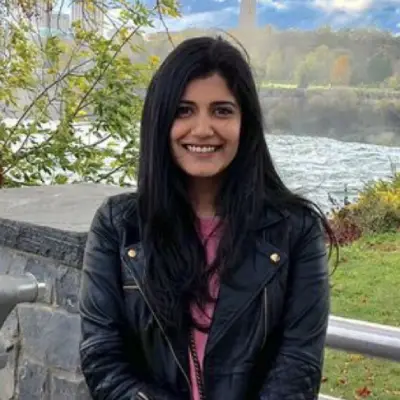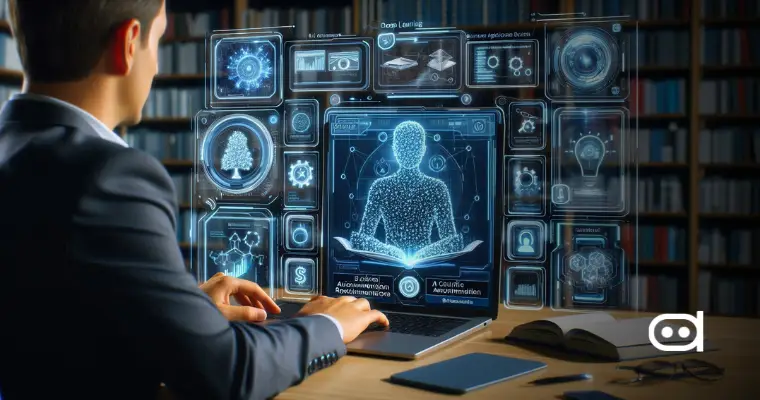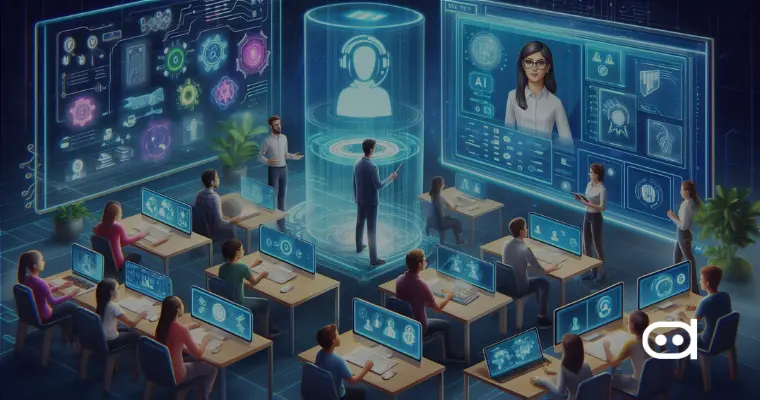
5 Best AI Tools for Teachers: Key Tools, Benefits, and Future Trends
In recent years, the advent of artificial intelligence has enhanced education standards. This in-depth article outlines five dominant AI tools that are changing the face of education and describes their advantages, functionality, and scope of use in today’s educational facilities.
Key Takeaways
- Adaptive technology allows for the implementation of AI-driven tools to enhance student learning.
- Automated assessment and diagnostic testing systems relieve educators of the tedious marking and scoring processes.
- Interactive learning environments promote the involvement of students in the process.
- Predictive analytics in learning helps in the evaluation and improvement of performance.
Top 5 AI Tools for Teachers And Educators
| Tools | Best For | Prices | Platform Compatibility |
|---|---|---|---|
| MagicSchool.ai | Best AI tool for Teachers to make daily tasks automated | Free Version: Available Plus: $99.96/Year |
Web And iOS or Android App |
| Otter.ai | Best tool for automated note-takers in any meeting | Free Version:Available Pro- $8.33 Per User/month Business- $20 Per User/month |
Web browsers and Mobile devices |
| Socrative | Create quizzes and exams and get immediate feedback on student learning | Free Version:Available Essentials: $9.99 Per Seat/ Month Pro: $16.99 Per Seat/Month |
ChromeOS, iOS, and Android |
| Diffit | Diffit.me is best for individuals and businesses looking for a hassle-free way to generate written content using AI | Free Version:Available Pro Tier:$ 9.99/month School Tier:$99.99/month |
Desktops, tablets, and Mobile devices |
| Quizgecko | Automatically generate online quizzes, tests, and exams | Basic Plan: $24/Year Plus Plan:$64/Year Premium Plan:$79/Year |
Mobile app available on iOS and Android Web-based platform |
Let’s Explore the 5 Best AI Tools for Teachers And Educators in detail:
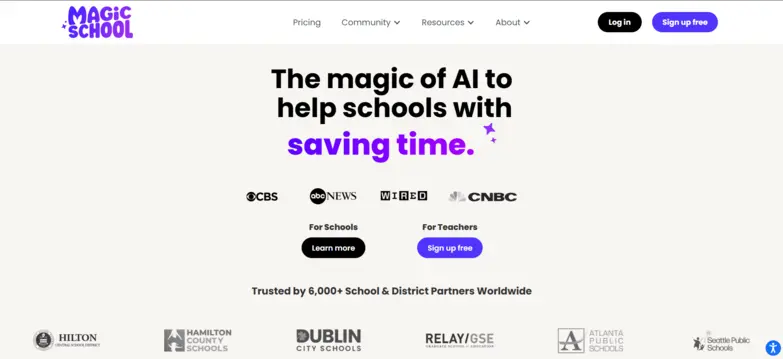
Introduction
MagicSchool makes it easier, cleaner, and faster to create lesson plans thanks to content generation and customization by AI. This inspiring technology enables teachers to design educational materials in a few minutes. MagicSchool is a versatile AI education tool that has been designed with schools and teachers in mind. Such tasks include developing lesson plans, writing tests, building rubrics, and offering assistance to educators in particular classes. More than 60 tools are incorporated within the tool.
In the MagicSchool AI application, people can modify their designs according to the class and level of understanding of the students. Besides academic support, the AI tool also offers additional aspects that encourage positive relationships and emotional learning within the students.
Key Feature
- Create custom visuals with the Image Generator and save time on image searches.
- The Research Assistant makes lesson planning quicker and easier.
- Students can avail of personalized learning experiences with college and career counseling.
- Get detailed AI-generated unit plans in no time.
- Foster student collaboration with Team Builder.
Pros & Cons
- Reduces the time spent on planning lessons and creating assignments
- Experience more direct engagement with students
- Create personalized learning experiences for everyone
- Easy to address unique classroom opportunities and challenges
- The free version offers limited options
- Users may face a steep learning curve
Pricing

Introduction
Otter.ai is an indispensable classroom and educational AI tool that offers transcription services and note-taking functionalities that support the learning process. It enables teachers and students to make audio recordings of classes, meetings, and conversations, converting them into legible, easy-to-find, and shareable text. This AI-powered writing assistant helps students remain attentive while lessons are ongoing and also assists them in revising and working together, thus, making Otter.ai a significant technology in today’s learning institutions.
Using the NightCafe AI Art generator has numerous advantages. It has several algorithms and options that allow users to create exquisite and unique art pieces that are distinctive. It does not matter if you want to attempt making traditional artistry or even contemporary works of art, NightCafe will always have a suitable style and color scheme available.
Key Feature
- Real-time speech-to-text option that is perfect for meetings or lectures.
- Can distinguish between different speakers to accurately attribute dialogues.
- Available with apps for iOS and Android for on-the-go usage.
- Easily access and manage files with secure cloud storage.
- Collaborative AI tools for easy sharing and editing.
- Add custom vocabulary to improve the accuracy of your transcriptions.
Pros & Cons
- Offers an efficient live editing feature
- Can be easily integrated with video conferencing apps
- The free plan offers several features
- Well-designed and intuitive to use mobile app
- Retains words like “umm” in the transcription
- May have trouble understanding accents
- Requires clear audio for transcription
Pricing
- Free Version: Available
- Pro: $8.33 Per User/month
- Business: $20 Per User/month
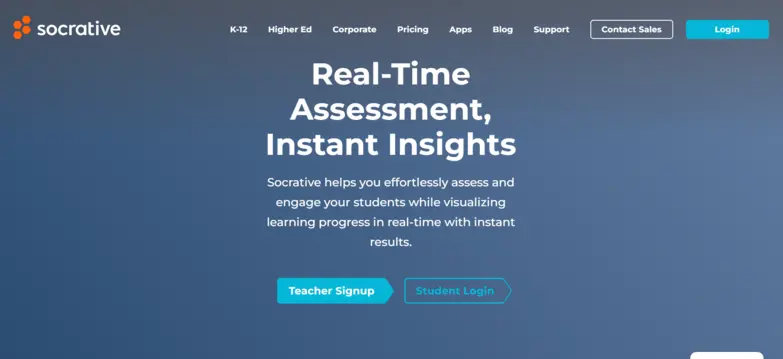
Introduction
Socrative is an advanced assessment AI tool that facilitates evaluation and feedback of students during the class in real-time. Socrative AI is currently in Beta version. This AI tool is a resource that helps in overseeing and facilitating the teaching and learning process in a way that relieves educators of this burden and, at the same time, affords the learners pleasurable activities.
Socrative quizzes give you instant results as they are graded in real-time. The quiz reports help one see exactly how to target their teaching efforts so that there is less time spent grading student work and more time spent teaching the students.
Key Feature
- Students can join virtual rooms created by teachers with a unique code.
- Gamification helps challenge students to do better.
- The leaderboard sheds light on weaknesses and helps students improve their knowledge.
- Real-time feedback and assessment are possible.
- Generate and export reports via downloads, email, or Google Drive.
Pros & Cons
- Quizzes have useful features like adding links and explanations
- Virtual rooms come with smart classroom management features
- Easy-to-use and understand interface
- Online course evaluations reduce administrative work
- May be more serious in tone than its competitors
- There are limited customization options in the free plan
Pricing
- Free Version: Available
- Essentials: $9.99 Per Seat/ Month
- Pro: $16.99 Per Seat/Month
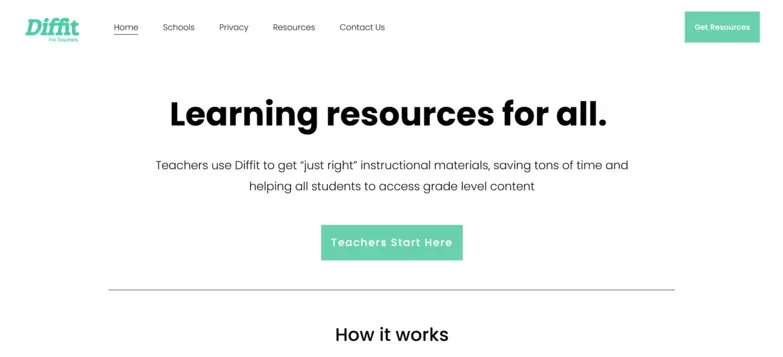
Introduction
Diffit focuses on designing differentiated instructional materials to meet the needs of students of every kind. It is a creative AI too that helps in the planning process by enabling users to create custom-made learning resources in a matter of minutes. If you want vocabulary lists or assessments, or if you want specific reading passages, Diffit can help you out. You can find content by subject matter, upload a page from a pdf, provide a web address, or copy text, and the Diffit AI tool will provide a range of resources for students.
Key Feature
- simplifies reading passages for different grade levels (2nd-11th) and allows teachers to edit content and sources.
- Generates graphics to visually explain topics, enhancing student understanding.
- provides editable key point summaries for quick topic reviews.
- It highlights and defines key terms, offering examples for context.
- creates customizable assessment questions with answers, adaptable to different difficulty levels.
- The AI tool generates prompts for creative and deeper student engagement, with options for editing.
- Translates learning resources into multiple languages for inclusivity.
Pros & Cons
- Generate printable or digital resources on nearly any topic
- Quickly alter content for different levels
- Generate ideas for class engagement
- AI-generated content needs careful teacher review
- Some topics don't provide thorough resources
- No student progress tracking or dashboards are available
Pricing
- Free Version: Available
- Pro Tier: $ 9.99/month
- School Tier: $99.99/month

Introduction
The process of generating and assessing quizzes is made easier with the assistance of Quizgecko. This AI teaching assistant makes use of advanced AI tech to develop and implement tests and quizzes for businesses and educational institutions. Users can transform any document whether it is in DOC, PDF, or PPT format, into engaging quizzes or flashcards with ease.
This teaching assistant AI tool supports many languages and is used by over 3000 customers globally including institutions such as Princeton, Stanford, and Yale. The software incorporates AI-driven personalized feedback and a unique Mastery Score™ tool that helps users monitor their learning progress. Quizgecko embraces spaced repetition, a scientifically backed method that enhances memory retention by revisiting challenging concepts at strategic intervals.
Key Feature
- Uses spaced repetition features as a way of learning.
- The Mastery Score™ tool helps keep track of one’s learning growth and stage.
- The mobile app enables the creation of custom quizzes at any time and place.
- Enables quiz designing and learning in different languages.
- Provides custom solutions to facilitate better learning results, teaching activities, and professional training.
Pros & Cons
- Many interactive quiz formats are available
- Helpful real-time progress tracking
- Comprehensive coverage of all subjects
- Limited customization options are available
- There could be data privacy concerns with this AI tools
- Requires frequent updates for optimal usage
Pricing
Quick Guide on Using AI Tools in Education
What is the use of AI in Education?
Personalized Learning
Using data analytics and AI on student performance results helps in the establishment of a personalized learning journey for each. These machine learning algorithms adjust the content level and speed to the learner’s individual growth so that every learner’s educational goals are achieved.
Automated Grading
Grading assignments, tests, and quizzes through AI-based grading tools can be done accurately and quickly. Such automation enables enhancing instruction and interaction with students while keeping grading standards constant.
Interactive Lessons
Artificial intelligence applications promote the use of lesson materials in a creative and interactive manner by offering customized content, instant feedback, and engaging gamification. This facilitates higher levels of student participation and also retention of knowledge.
Student Assessment
With the use of AI in education, student performance is thoroughly analyzed and learning gaps are easily detected so that appropriate remedies are prescribed. Such a data-driven approach allows for corrective action in advance and enhances teaching techniques.
Factors to consider when choosing the best AI Tool for Teachers and Educators
Choosing the correct artificial intelligence technology that fits educational purposes is not an easy task and therefore there are several key aspects to consider when doing so. Here are tips for you to consider:
Ease of Use and Accessibility
The AI tool should have a user-friendly design for both the teachers and the students so that no elaborate training is needed to operate it. Choose applications that have both desktop and mobile devices and offer the same user experience. For instance, Socrative offers a coherent and simple interface making it easy to use.
Adaptability and Personalization
Educational tools for teachers should be flexible to accommodate a range of teaching and learning styles. The AI-powered tool should be able to allow alterations in how content is presented and how tests are assessed. For instance, reporting tools in MagicSchool.ai allow the content level to be changed depending on the understanding of the students.
Data Privacy and Security
Focus on solutions that address applicable education privacy laws and standard security practices such as FERPA and COPPA. Verify user authentication protocols, data encryption standards, and transparent data handling policies. Ensure the AI tool you use provides clear documentation about their data storage and sharing practices.
Cost and Scalability
Examine the upfront costs and the future feasibility of the AI tool. Pay attention to the pricing structure (eg. Pay per user, pay per class, or institution-wide licenses) and make sure it is within your budget. Identify AI solution providers who can meet your growth without considerable extra expenditure or technological hassles.
Content Quality and Updates
Look into the effectiveness and applicability of the content produced by the tool. The application should have periodic enhancements to avoid being obsolete and to comply with the present educational requirements. Find out the frequency of the updates and whether the content provided can be altered by the teachers.
Benefits of using AI tools in Education
AI technology serves as a powerful ally for educators, enhancing their capabilities rather than replacing their essential role. It provides several transformative benefits that streamline teaching and learning processes.
Efficiency in Content Creation
AI has made a lot of positive changes but its most striking contribution is to content generation where it helps reduce the time of preparation by about 60% of what was spent before. There is no need for teachers to spend excessive time coming up with customized worksheets, quizzes, and teaching plans for classroom activities. Rather, teachers have more time available for interaction with students and personalized instruction.
24/7 Learning Support
With the usage of Artificial Intelligence, students are more engaged since they do not have specific hours that learning activities are limited to. The best AI education tools answer frequently asked questions instantly along with providing automated help for school assignments as well as exercises that vary based on the child’s ability. Students also do not have to wait for class and can use these supportive learning materials anytime, promoting more independent studying.
Data-Driven Insights
Pretty much the most obvious benefit of generative AI, especially in education, is the management of student performance data, its collection, and analysis. These tools can scan for and evaluate learning patterns and gaps, predict potential academic challenges, track progress in real-time, and recommend personalized interventions. This makes it possible for the teacher to best support each student, tailoring instruction to individual needs.
Automated Administrative Tasks
AI technology takes care of teacher workload as it takes care of repetitive tasks for them. Some of these tasks include grading, attendance tracking, and managing schedules and calendars. By taking care of such burdensome and monotonous duties, generative AI allows teachers to devote their attention to more relevant interactions.
Key technology behind the generative AI Education tools
Modern educational AI harnesses diverse and complex technologies in the quest for efficacious teaching. These generative AI tools for education are based on Natural Language Processing (NLP) at the foundational level and have Machine Learning algorithms that hone in on patterns of interactions with students. Deep Learning neural networks enable complex functionalities such as handwriting and speech recognition, hence giving room for a more fluid human interface for the computer. All these mechanisms are aimed at profiling and analyzing the learners’ interactions to develop appropriate materials and enhance interactive learning by incorporating feedback, hence changing the static mode of teaching and making it dynamic.
Why teachers should use AI tools for teaching
Save Time
AI tools for teachers are capable of performing tasks such as marking multiple-choice exams, preparing simple lesson plans, and other similar repetitive tasks. Such automation can help teachers find up to six to eight extra hours in a week for more productive teaching work rather than engaging in mundane routine tasks.
Get Helpful Information
AI applications can track student achievement as well as other metrics and student trends in a detailed manner. Teachers can understand individual student needs, and get actionable and valuable insights about class progress, and areas requiring additional attention.
Increase Creativity
AI supports teachers in streamlining tasks by reducing mundane activities thanks to AI systems, hence they can come up with new lesson ideas and enhance the way that teaching is done. This technology still offers ideas and ways of working that have proven to be successful in teaching, for example, offering activities and ways of working that are more creative.
Make Learning Personal
Such systems detect trends in the performance of each learner and subsequently address them with unique teaching strategies. They also alter how the generative AI tools for education present the information to the learner depending on their level of understanding to keep them engaged without straining them too much.
Mastering AI Prompts: A Guide for Educators
1. Lesson Planning: “Create a [subject] lesson plan for [grade level] that covers the topic of [specific topic] to include activities for other types of learners as well.”
2.Content Creation: “Design an activity about [topic] that incorporates [specific skill].”
3.Student Support: “Explain [concept] using analogies suitable for [age group].”
4. Enrichment & Extension: “Create an extension project for students who excel in [subject], allowing them to explore [advanced topic] in greater depth.”
5. Feedback and Reflection: “Generate personalized feedback for a student’s work on [assignment], highlighting strengths and areas for improvement.”
Free Vs Paid AI Education Tool
Paid AI learning aids are usually more beneficial to most users, especially to institutions and instructors with growth requirements or data protection concerns. Although effective for first use, free educational resources tend to be less developed compared to the full versions.
The premium versions come with important features such as better security, analytics, and service support priority, which are imperative in dealing with high volumes of students, protecting their data, and ensuring effective learning.
If you want a strong and expandable solution that meets the educational needs over the years, then paid solutions are the ones to choose. Where the use is minimal or even basic, free resources may be enough.
Future Trends in AI for Education: Impact on Teachers and Students
Challenges :
Data Privacy
A multitude of legal regulations such as GDPR, FERPA, or COPPA, pose different compliance requirements that educational institutions have to comply with. Maintaining high-level security is an ongoing problem for schools, while at the same time, hassle-free functioning is also desirable.
Infrastructure Gaps
Lack of good internet access and modern devices in some areas leads to a digital divide between well-off institutions and poorly funded ones. More recently developed AI tools for education can be particularly problematic for schools situated in the countryside due to their limited bandwidth.
Training Needs
There is much need for increased professional development for educators on the use of these AI tools, but most often, the bigger elephant in the room is finding the appropriate time to do this training after teaching. Due to the advanced rise of AI technologies, the need to keep on refreshing one’s skills is unending, and this is made worse by the fact that there are few or no trained personnel in the field of AI education.
Cost Barriers
Apart from the normal buying cost, the expenses that an organization should look for include the costs associated with rollout, upkeep, and periodic updates. Also, the costs associated with licensing for multiple users or classrooms can be overwhelming.
Scope :
Expanded Accessibility
The advancements in AI-based technologies in the context of language translation will ease communication, hence enabling every student to access quality education without barriers. Adaptive technologies will revolutionize learning for students with different abilities and provide personalized learning experiences and guides.
Enhanced Personalization
In terms of personalization, next-generation adaptive learning AI-powered tools will create unprecedented personalized learning experiences. AI in education helps unlock opportunities by employing sophisticated machine learning algorithms to analyze student behavior patterns and predict potential learning difficulties before they become significant obstacles.
Improved Assessment
The speed at which a real-time evaluation AI-powered tool provides feedback towards completion of tasks by students will be very rapid as it will be both qualitative and quantitative in nature.
Global Collaboration
In turn, the utilization of virtual and augmented reality technology will assist in the development of international classrooms in which students from all over the world can learn global education like never before. Due to the AI-based project matching, students from different countries will be able to work together by connecting their interests and skills, which will help to achieve international teamwork.
Conclusion
The AI tools considered in this article are at the cutting edge of technology, providing compelling responses to the demands of today’s education. These systems have proven their worth by enhanced student engagement, minimal paperwork, and better learning results. Systems such as MagicSchool.ai and Otter.ai are content and document development tools, while others such as Socrative and Quizgecko change the game in terms of assessment and feedback. The cost of these AI systems is not burdensome for organizations that seek to change their learning system and offer differentiated learning.
FAQs
What is the role of AI in enhancing student engagement?
Through the use of learning AI tools, students benefit from customized content delivery, real time feedback, and adaptive questioning. Such AI tools assist in capturing students’ attention by altering the degree of difficulty levels, as well as the manner in which information is presented, hence making learning active and interesting in contrast to passive learning which is often boring.
How do AI tools support teachers in managing their workload?
AI minimizes the non-teaching responsibilities of the teacher as it can grade, take attendance, or even create lesson plans for a teacher. For example, teachers estimate that 20-40% of their preparation time is reduced, enabling more time devoted to the active engagement of students and individualization of instruction.
What role does AI have in student feedback?
AI gives timely and uniform responses to the students on their assignments and evaluations pinpointing what areas need improvement and where to get such targeted help. This repetition of practice helps students assess their performance and modify how they learn to make further progress.
What is the impact of AI on traditional teaching methods?
AI modernizes traditional teaching approaches by personalizing content delivery and automating routine tasks. It also helps provide valuable insights for educators using machine learning algorithms. Rather than replacing traditional methods, AI tools complement them by enabling more efficient and effective instructions while maintaining the crucial human element of teaching.
What is one concern raised about the use of AI tools for education?
The main issue is the danger of dependence on AI systems, particularly in education, as this could make the students less critical of the information presented. There are also worries surrounding privacy issues and the use of AI in education without replacing the essential interactions between learners and their teachers.
- Key Takeaways
- Top 5 AI Tools for Teachers And Educators
- Quick Guide on AI Tools For Education
- What is the use of AI in Education?
- Choose the Best AI Tool for Teachers
- Benefits of AI tools in Education
- Key Technology Used in AI Education Tools
- Why AI tools for teaching
- Mastering AI Prompts for Educators
- Free vs. Paid AI Education Tool
- Future Trends
- Conclusion
- FAQs
SHARE
Related Articles

